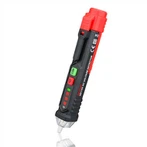The principle and characteristics of high-precision telescope handheld laser rangefinder
Laser rangefinders generally use two methods to measure distance: the pulse method and the phase method. The process of pulse method ranging is as follows: the range finder is emitted; the laser is reflected by the object to be measured and then received by the range finder, and the range finder records the time of the laser round trip at the same time. Half the product of the speed of light and the round-trip time is the distance between the rangefinder and the object being measured. The accuracy of the distance measurement by the pulse method is generally around +/- 1 meter. In addition, the measurement of this type of rangefinder; the measurement blind area is generally about 5-15 meters.
Product Features of High Precision Telescope Handheld Laser Rangefinder:
This instrument operates on semiconductor lasers with wavelengths of 905 nm and 1540 nm. For the 905nm and 1540nm laser rangefinders, we call them "safe". YAG laser operating at 1064 nm. The wavelength of 1064 nm is harmful to human skin and eyes, especially if the eyes are accidentally exposed to the laser of 1064 nm wavelength, the damage to the eyes may be fatal. Therefore, in foreign countries, the 1064-nanometer laser is completely banned in handheld laser rangefinders. In China, some manufacturers also produce 1064-nanometer laser rangefinders. As for the 1064-nanometer laser rangefinder, we call it "unsafe" because it is potentially harmful to the human body.






